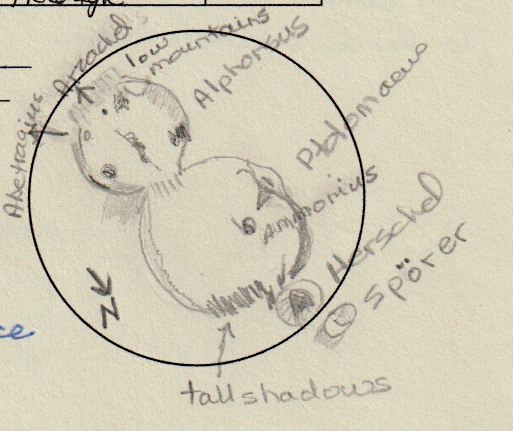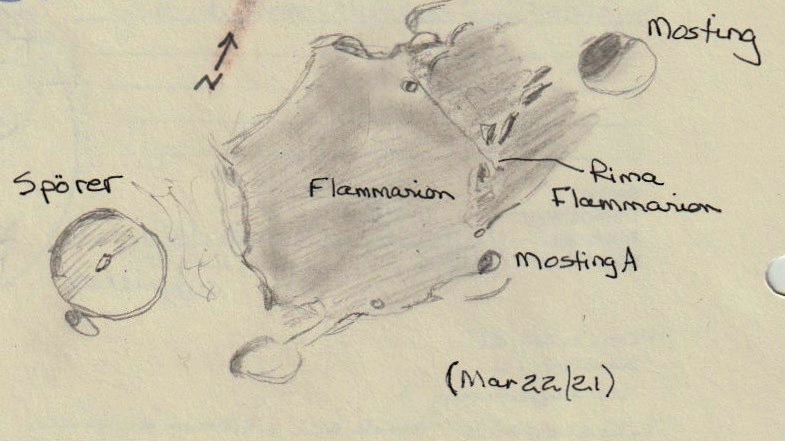IWLOP #075 - Ptolemaeus & Alphonsus
Very prominent craters easily visible through binoculars. Older Ptolemaeus (pre-Nectarian) and younger Alphonsus (Nectarian) are visible on the terminator at the same time. Ammonius, located on Ptolemaeus' floor, is one of only a few named craters within a larger one.
Location: 12.0 S 2.0 W Origin: Impact Size: 153 km (Ptolemaeus), 110 km (Alphonsus) Rukl: 44 Type: Complex Craters (CC)
Objects: Ptolemaeus, Alphonsus, Herschel, Ammonius, Flammarion, Rima Flammarion
Identified Others: Glyden, Mosting, Mosting A, Spörer
 |
Observation 1: R1: Alphonsus' central peak was located adjacent to a rise or rille. |
|
Observation 2: R1: Herschel is north of Ptolemaeus and is quite deep by comparison, and is especially deeper than the shallow Spörer to its north. C1: There are three distinct dark patches in the NE, SW and SE. NOTE: Research conducted after this session indicated the dark patches were ash deposits from fire fountains that ocurred after Alphonsus was formed. |
 |